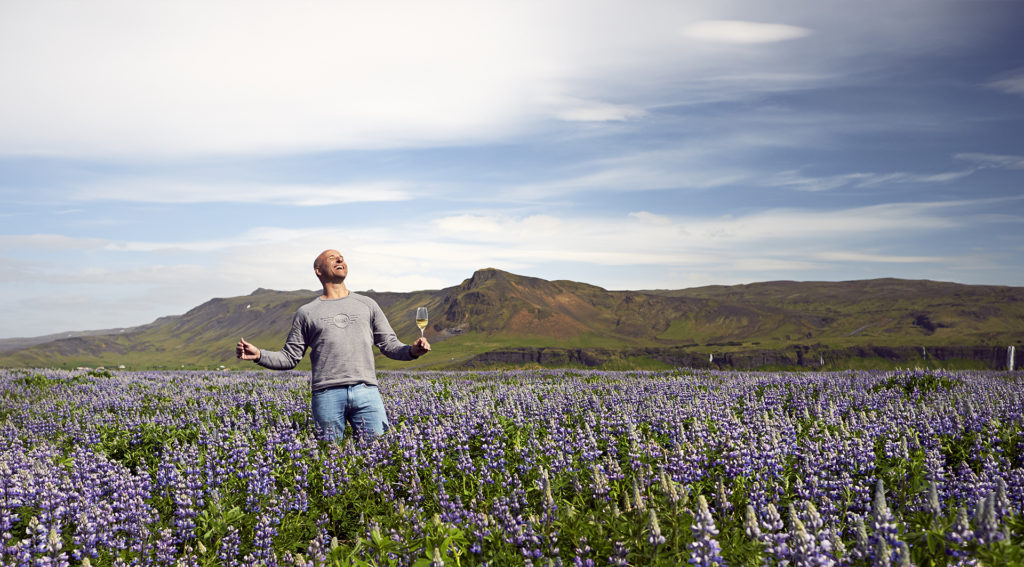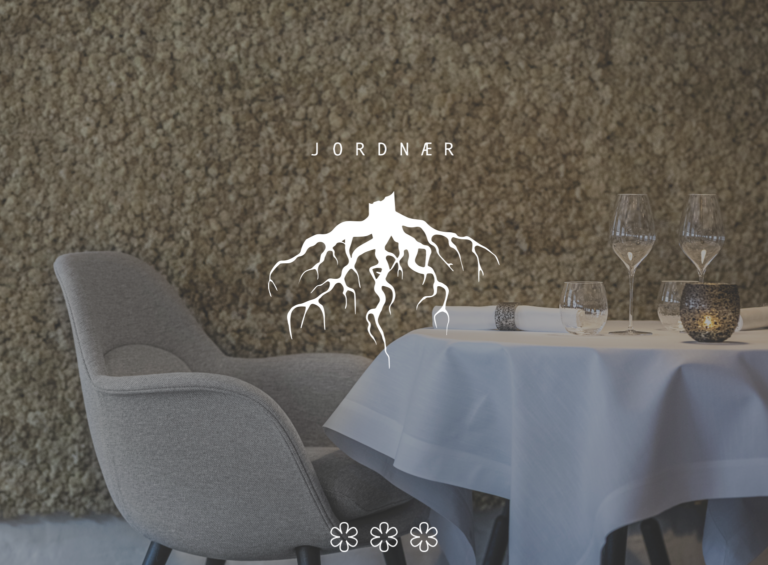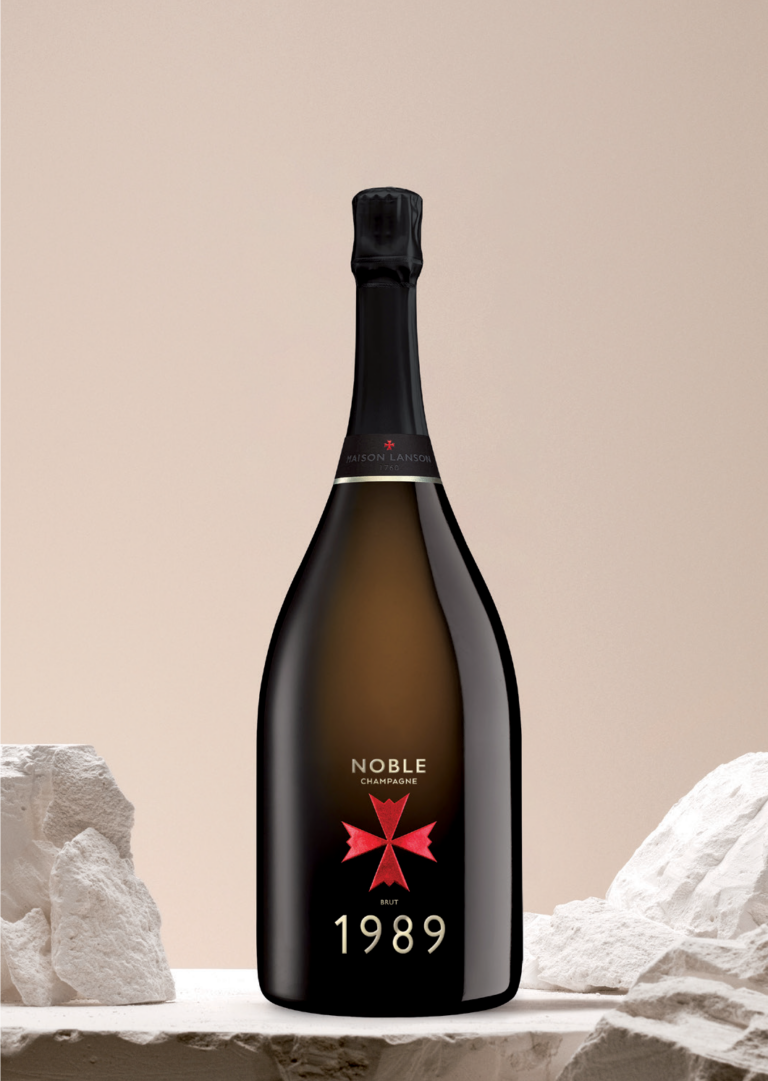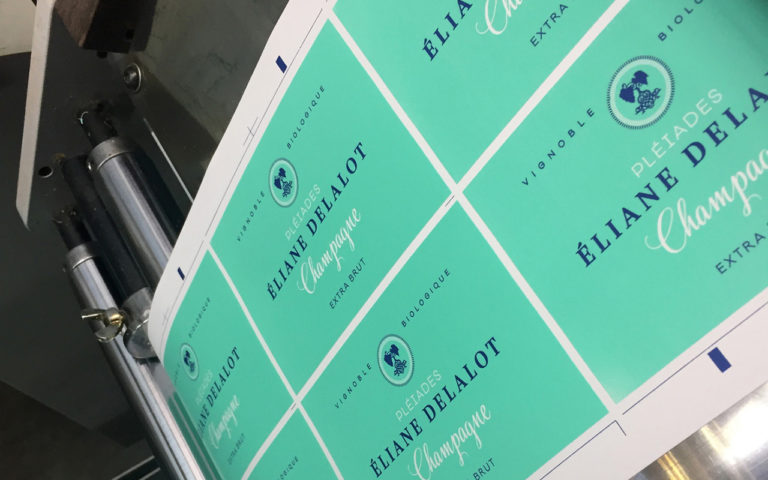This week editor & publisher Sara Underwood interviewed Richard Juhlin for the Australian Champagne Magazine Vine & Bubble. [ read our interview with her here. ]
Estimated reading time: 8 minutes

INTERVIEW RICHARD JUHLIN FOR VINE & BUBBLE
You’re known as a super-taster and one of the world’s best. What advice would you give to someone wanting to develop their palate?
RICHARD JUHLIN ‘The most important thing is to get a large fragrance bank by smelling objects and experiences in everyday life. If you have built up a sufficiently large bank of fragrance memories, the ability to secrete different tones in the wines you try is automatically increased. In addition to this basic training, concentrated tasting with full focus on each clue a wine conveys the key to an improved tasting result. If you use my 7-step tasting ladder, you will probably have a better structure to achieve linked results.’
MY SEVEN TASTING STEPS
- General quality level? Standard champagne, vintage or prestige cuvée?
- Type of producer. Grower or champagne house, specific producer style?
- Age and vintage character?
- Type of vinification? Oak barrel / steel tank? Dosage level? Malolactic fermentation or not? Reductive or oxidative vinification? Biodynamic vinification? Bottle size? Disgust date? Etc.
- Grape composition?
- Geographical orientation? Any special region or even special terroir from individual village or location?
- Summary conclusion?
After a few years of training and a number of tasted champagnes, you will often be quite close to the right answer with your guess, which gives an extra kick and an increased desire to learn more about the secrets of the noble wine.-
Minerality is a descriptor often cited in champagne tasting notes – but what is it really from a sensory perspective? Do you think you can taste it? Sense its texture? Or is it really an impression from sulphur?
RICHARD JUHLIN ‘With all due respect, I know that especially in the new world and wine-producing countries such as the USA and Australia, the impact of terroirs on the character & quality of wine has long been questioned. Personally, I see this as a natural consequence of the fact that the heat-based climates you have in each wine region are primarily climate-specific, which means that quality is achieved through grape selection and optimization of vinification methods. In cool border climates such as the Rhine Valley, the Moselle Valley, the Champagne, Chablis & Loire, terroir and mainly the mineral are instead the most important link to perfection.
That this so obvious truth has been so intensely questioned over the past ten years, I perceive mostly as lobbyism from terroir-poorer wine districts. Anyone who has tasted the difference of a Champagne in from Le Mesnil-sûr-Oger placed next to the neighbor Vertus or has drunk a blanc de noirs Aÿ or nearby Dammery understands what I mean. As a blind tester, I believe that the differences in terroir & mineral are the single most important features that lead me to the right conclusion in blind tastings.’
Much has been said about phenolics in champagne wines in recent years, especially in supporting acidity. How would you describe the difference between good and bad phenolics in champagne?
RICHARD JUHLIN ‘The two winemakers of Champagne that has driven this work forward is Richard Geoffroy, the former chef de caves of Dom Pérignon, and Benoît Gouez, chef de caves at Moët & Chandon. One side of the matter is what the phenolics give to texture. The term ‘phenolic taste’ is ill-defined, but is proposed to include the taste and textural attributes of astringency, bitterness, viscosity, oiliness, metallic and pungency/burning. The other side is what phenolics adds to the champagne in the form of ’body’ & length. In this era of more focus on biodynamics my feel is that we have more & more richer Champagnes which, if the winemakers is not paying close attention to the whole process will end up with a champagne that are rich & clumpsy & lacking elegance which will also mask its tru terroir.’
What is the most important thing for the future of champagne as a wine, do you think? How do you see it evolving?
RICHARD JUHLIN ‘To begin with, I would like to say that I am very positive about the development that is currently taking place in Champagne., Never before has there been such an intense bubble of innovations and exciting ideas in harmony with the deep historical tradition that prevails in the district. The new generation of growers is the locomotive that pulls the big champagne houses with it in its pursuit of perfection. Of course, many mistakes are also made and you go too far in your extremes sometimes. But overall, I think the new focus on more nature-respecting viticulture and vinification methods is a very positive trend that is here to stay.
The development towards more and more vineyard-designated wines is of course a favor for champagne nerds like myself, as you can study terroir and growing places in detail in a completely different way than before. Having said that, I would still like to point out that most magnificent champagnes will always consist of glorious cuvées from a mosaic of vineyards and villages. So you can certainly see me as a rigid traditionalist, but I think that the combination of the youthful energy with the pursuit of change that is now blowing like a fresh western fan over the vines is exactly what is needed to awaken both me and those so strongly influenced by history the champagne houses.’
What is your greatest champagne memory?
RICHARD JUHLIN ‘Since I have tasted 13,200 different champagnes and probably 150,000-200,000 bottles over the years, it is of course difficult to rank all these perfect & unique experiences with my best friends in the perfect places in harmony with those perfect bottles.
An experience that stands out, however, is the first time I tasted Pol Roger in 1914 in the Winston Churchill room with my best friend Christian Pol Roger. Significantly more recently, I have 100 incomparable experiences when I traveled the world to create my book & concept ‘Champagne Hiking’. (See link – https://www.champagneclub.com/champagne-hiking/ ) Several of the places I & my photographer Pål Allan visited were so unreal that not even a world class photographer like Pål could capture its true beauty. To drink the perfect champagne during total mindfulness and follow the shifts of nature for a number of hours was pure magic. Impossible to rank, but if I have to, I highlight my encounter with the gigantic beauty of the turquoise lake and Patagonia Gaudi-shaped monstrous rock formations in the clearest air in the earth along with a bottle of 2005 Bollinger ‘Vieilles Vignes Françaises’ as an unbeatable memory.
Getting the perfect champagne experience does not necessarily have to be the same as the perfect champagne. When I taste champagnes professionally for things, I always sit in a neutral mental room to assess the quality of the champagne as objectively as possible.’
‘Since 1979 I hold Krug Clos du Mesnil as my favorite almost every year, For me its simple the best wine in the world together with Romanée-Conti from DRC. But there are so many that I like to recommend for you that you best find in my champagneclub.com. Among the 13 000 unique champagnes I have tasted I have only awarded one champagne the perfect score 100 points.‘

1928 Pol Roger ’Grauves VInothèque’
Disgorged in July 1998.
TASTING NOTE ‘Ridiculously young! I’d heard that this wine was supposed to be exceptionally lively and pale, but I would never have been close in my guesses if it hadn’t been served in the last round at Villa Pauli in 1999, where there were only oldies. The nose was fabulously, beautifully braided, with notes of lime, linden, and lily of the valley. The taste was super-fresh, with a wonderful oily fruitiness that lasted for several minutes. My second bottle of this “out of this world” wine had the same date of disgorging, so it was with a certain hesitation that I dared wait five years before releasing the cork. The wine was enjoyed at one of the most magical dinners in the history of Swedish gastronomy, at the Pontus in the Green House restaurant in Stockholm, March 2003. That evening we drank a 1986 Selosse, three legendary vintages of Bollinger, two phenomenal Dom Pérignon Rosés, a ’61 Comtes de Champagne, Ramonet, Lafite, Romanée-Conti, Richebourg, Romanée-Saint-Vivant and a 1947 Cheval Blanc. The ’28 swept the floor! The nose was so intense that I was moved to tears. Its already phenomenal bouquet of aromas had expanded further, with exotic notes of coconut, papaya, and mint chocolate. Somehow, this wine—on the very day we opened it—stood at the apex of its life it succeeded in uniting the ’79 Krug Clos du Mesnil’s acidic elegance with a ’76 Comtes de Champagne’s exoticism and a ’38 Krug’s mint notes. I must admit that—spoiled and pampered as I am—I didn’t think that a wine could affect me so deeply as this wine did that evening. I am in love!’ –
The rush on champagne sales, during COVID-19, is a global phenomenon. What have you been drinking and investing in during the pandemic?
RICHARD JUHLIN ‘I am far from an economic expert, but from what I understand, there is always a sharp rise in sharp declines, which was the natural case during the pandemic. Personally, I was never worried as Champagne has always risen in all deep crises. And as the old Swedish expression is ‘after rain always comes sunshine’. What surprised me this time was, above all, that the decline was so short & that the recovery took place so quickly.
Then, contrary to what people in our industry want to admit, it is a fact that, firstly, champagne is drunk in unconcentrated forms in nightclubs and bars. That we champagne lovers would continue to drink champagne as before feels quite obvious. Personally, I have not changed either drinking patterns or buying patterns at all. The only difference is that I have not been able to enjoy my goodies at a restaurant like, before.’





